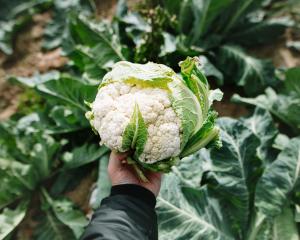Vegetables
Green manure crops can continue to be dug in and the ground prepared for seed sowing by breaking down the surface with a fork and raking it level.
Dig green manure into the top 15cm of soil only, as the organisms that convert green manure to humus are more numerous there.
Green manure crops, such as mustard and oats, which make rapid growth at this time of the year, can be sown in garden areas not needed until late summer or autumn. Mustard is closely related to the brassica family (Brussels sprouts, broccoli, cabbage), so if those crops are to be sown in the space, choose oats or barley for the green manure.
Do not dig if the soil is wet.
This is especially important with heavy clay soils, as they become concrete-like when they dry out after being dug when waterlogged.
Any swedes, carrots, parsnips and leeks still in the ground can be lifted and heeled in a corner of the garden to clear the way for sowing new seed during the next few weeks.
Parsnips freeze well: peel, cut them into pieces and freeze without blanching.
Parsnips require a longer growing season than other root crops. Any time from now until the first week in October will give seedlings the good start they need.
Poorly drained soil can be improved by pouring about 1cm of sand in the bottom of the seed drills. Cover the seed with more sand. Avoid sowing parsnips in recently manured ground or they will develop forked roots.
Ground which last had cabbage, cauliflower or Brussels sprouts grown in it is suitable.
Add garden lime (30g/sq m) and a dusting of superphosphate before sowing.
Parsnip seed quickly loses its vitality, so fresh seed should be bought each year.
Parsley is best sown in a position accessible in all weather. The herb can be sown now and likes a soil rich in organic material and slightly acidic i.e., without lime added. Sowing now and again in autumn gives parsley for year-round use.
French beans, sweet corn and salad plants can be sown under cloches or old windows.
Peas should be sown in small quantities. Little and often gives pea crops over a longer period and avoids the problem of them all being ready at once and going to waste.
Flowers
In warmer districts, hardy annuals can be sown where they are to flower. As with all seeds, the trick is to have the soil well-prepared before sowing. Once seedlings appear, thin them out to prevent overcrowding.
Hardy, prolific and reliable flowers include alyssum, calendula, coreopsis, candytuft, cornflower, clarkia, godetia, Californian poppy (Eschscholtzia), larkspur, linaria, linum, night-scented stock (Matthiola bicornis), mignonette, love-in-a-mist (nigella), pansy and viscaria.
Nasturtiums flower all summer in full sun or partial shade.
They do well in poor soil but are frost tender so should not be planted out until the danger of frost has passed. Modern varieties such as Black Velvet, Empress of India, Peach Melba, Whirlybird types and the semidouble Salmon Baby are more compact than older trailing types and do not take off across the garden.
Perennials to raise from seed from now until the end of October include granny bonnet (aquilegia), dianthus, dahlia, delphinium, gaillardia, geum, gypsophila, hollyhock, lupin, penstemon, polyanthus, pyrethrum and viola.
These will all flower within 12 months and some will bloom in their first season.
Start them in trays of seed-raising mix, then plant them in the open garden when they have made some growth.
Fruit
Peach-tree leaf curl attacks peach, nectarine and almond trees. Active and damaging in late spring and summer, it should be treated now. Disease-causing fungal spores overwinter in the buds and bud scales of the host plant. They spread rapidly once the leaves appear, distorting them with a wrinkled, red appearance.
An early spring fungicidal spray can control attacks. Use lime sulphur (1:30 spray to water) or a Bordeaux mixture applied at the end of this month, just before the buds begin to open. Or spray with copper oxychloride (25g powder to five litres water) before the buds open. Do not use sprays on hot, sunny days as they may cause scorching.













